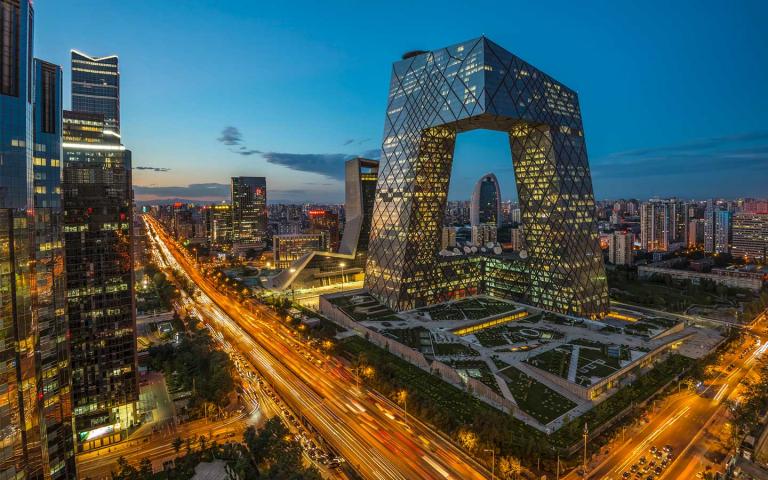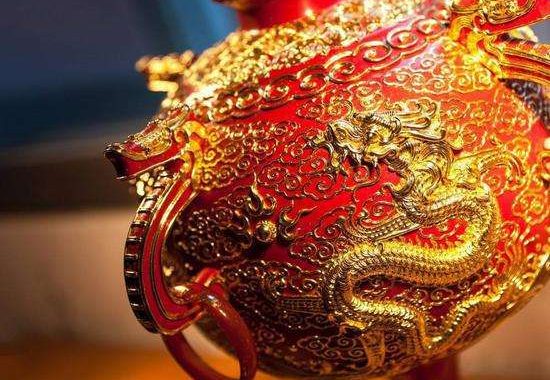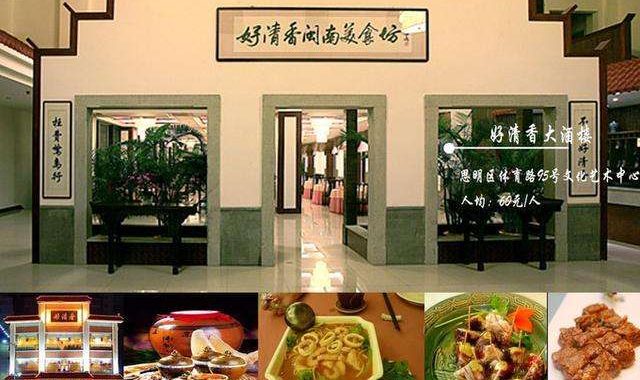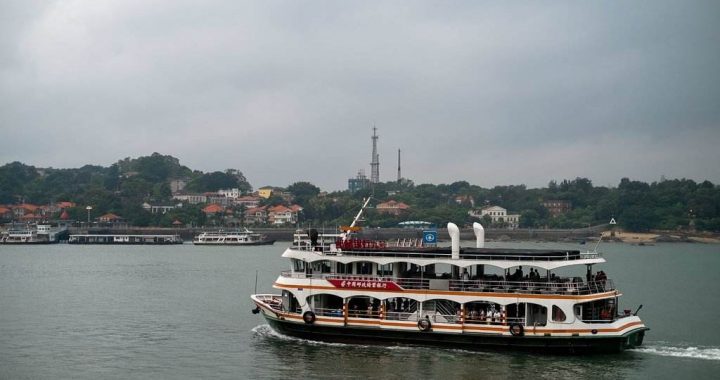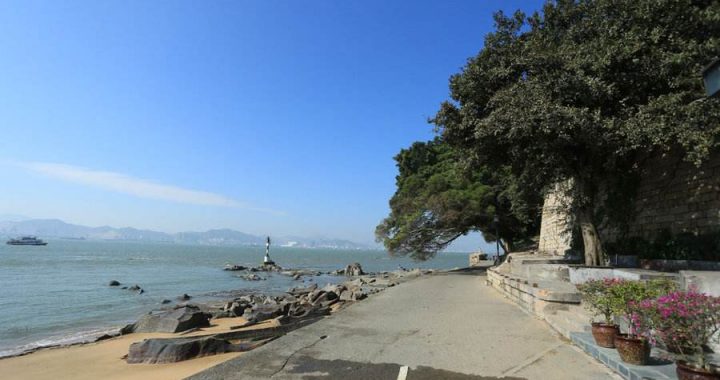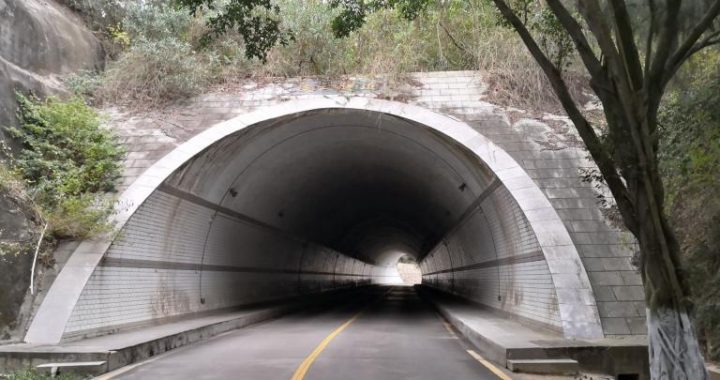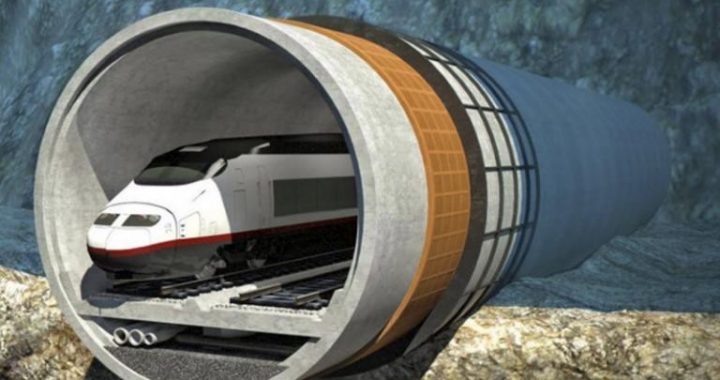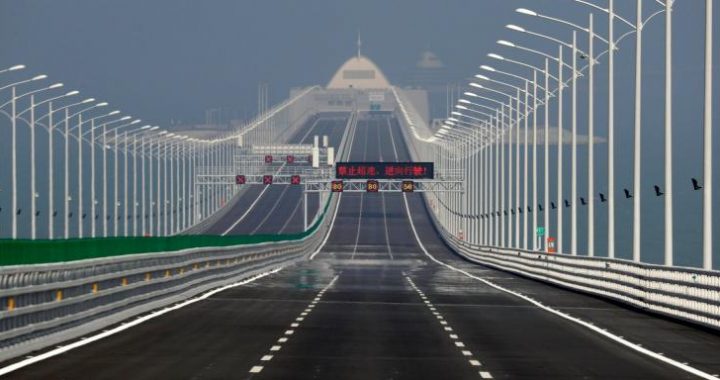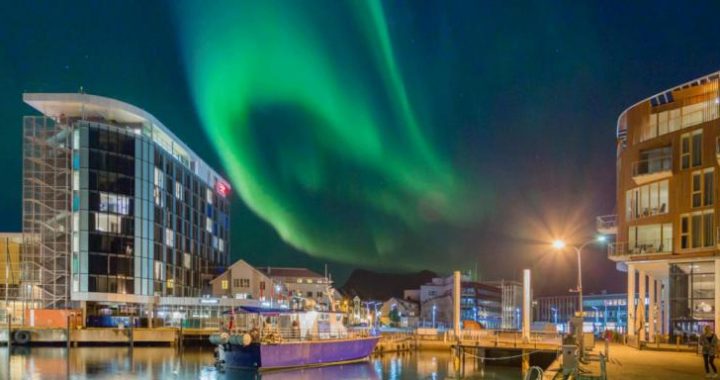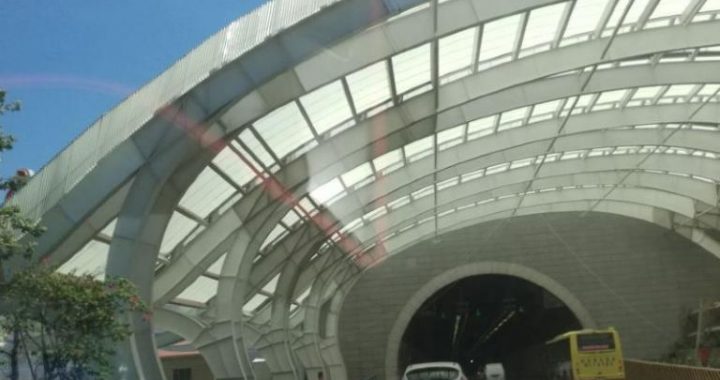China’s“College Town”
7 min readJimei-China’s“College Town”
Jimei Imagine a sleepy fishing hamlet transformed into a college town with over a dozen schools and over 200,000 students from around China and the rest of the world.That’s Jimei’s future,thanks to the century-old vision of Tan Kah Kee(Chen Jiageng)the Henry Ford of Asia who was born and buried in Jimei.
Jimei(“Gathered Beauty”),on the mainland west of Xiamen and just across Xidmen Bridge,has a population of about 330,000 and covers 276 km2,with 60 km of coastline,but its fishing days are largely behind it.Government brochures claim its new 32km2″Jimei Culture and Education Zone”will be an important research and education center,with such esteemed centers of learning as Hudqido University,Xiamen University of Technology,and Hudxid Institute of Technology.Th brochure also claims Jimei will become southeast Fujian’s“Central Intelligence District(CID).”
I assume they’re talking scholastics,not spies.
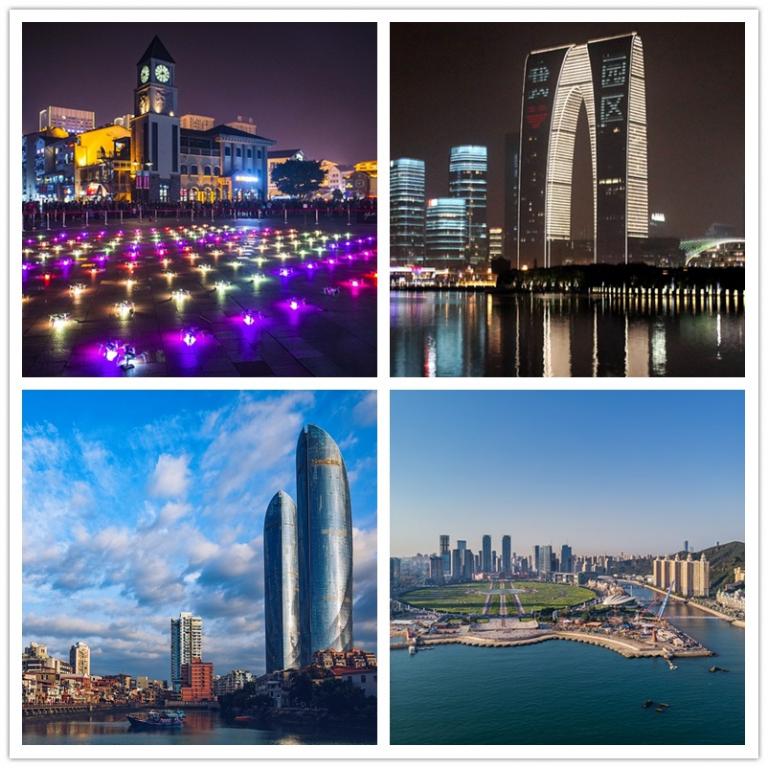
“From now on the devious fishing village has been knolling the first sound of school bel1,the Jimei School was founded already.”A Jimei resident.
The devious fishing hamlet of Jimei began its long journey to becoming China’s College Town in 1913,when Mr.Tan established Jimei Primary School on the site of the Jimei Ancestral Temple(Jimei She Zucitang).
Tan built 1l more schools,including a normal school,middle school,marine products school,agricultural and forestry school,merchants’school,etc.,and funded over 70 schools in other areas of South Fujian,as well as many institutes around S.E.
Asia.He also equipped his college town with a science center,gymnasium,library,hospital and navigation club.In Nov.1920,Tan offered one million Yuan to establish Xiamen University,which was opened the following year.
“The traveler will also be interested in the private school established and financed by a single Chinese gentleman…at Chin Be(Jimei)…Mr.Tan Kak Kee established the school about ten years ago…Mr.Tan has put in about $600,000 in modern buildings,and is paying about $6,000 each month for teacher’s salaries.He is planning to spend $4,000,000 in the establishment of a university in Amoy.At the present time he has the site and is getting plans from foreign architects for the buildings and equipment.This school is entirely a Chinese institution,with no foreign teachers and no foreign connections,and right out in a small Chinese village.The course of study is being made very practical,the latest thing added being a School of Fisheries.The buildings are modern in every sense,lighted witlelectricity,a special bath house erected,and running water in all the buildings.
When we think of the future days,it is one of the most encouraging things to be seen in the whole of China.”
Mr.Tan was Chinese to the core and proud of it,but also quick to appreciate the best of the West,which he expressed in his architecture.His buildings are a marriage of Western and Chinese architecture,using red brick,white stone,and glazed tiles.But the new Jimei University makes a radical departure from the Tan tradition.This campus more resembles a posh Oriental Holiday Resort than mere hallowed halls oflearning,and with its rapid expansion,seems intent on giving Xidmen University a run for its money.
Jimei Primary School(Jimei Xiaoxue).In 1913,Mr.Tan spent 2,000 Yuan to buy a pond,which he filled in to form part of the school grounds.He wrote that his goal was to improve the nation and society by promoting education.In 1916,he sent his younger brother,Chen Jingxidn,to prepare for a normal school and middle school.The land did not come cheap,as Jingxian had to deal with local superstition and fengshui practices.
In March,Jimei Primary School became part of Tong’an’s Sixth Education District(Xiamen was part of Tong’an at that time).
Tan started a women’s primary school in February,1917,but most families preferred their daughters stay home and work.
The normal and middle schools began in March,1918.Tan Kah Kee and his brother wrote the motto for the schools,“Sincerity&Perseverance”(Cheng Yi).Mr.Tan wrote to each county government in S.Fujidn to seek poor students,and,duringthe early years,the schools provided all students not only with free tuition but also,in the normal school,free bedding,mosquito nets,and school uniform.Tan also emphasized recruiting children of Overseas Chinese for the Jimei schools tostrengthen their feelings for their motherland(Jimei schools still have a large number of overseas Chinese students).
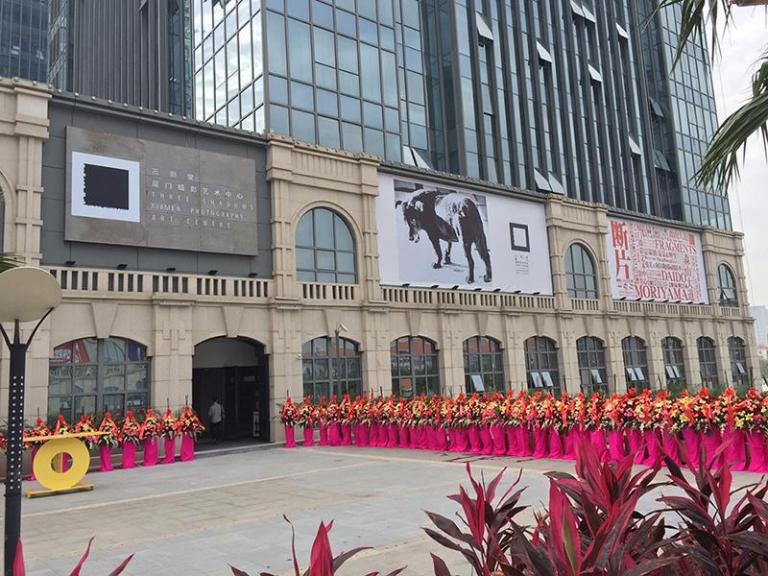
In February,1919,Mr.Tan started the Jimei Kindergarten(or Babyhood Normal School,as someone translated it),and in May he designated his 1.5 million square feet of shops and warehouses,and 7,000 acres of rubber trees,as a perpetual endowment for Jimei Schools.While at a Heng Mei Factory banquet,Tan announced that from then on he would funnel most business profits into education in China.
Tan started the Vocational School’s Aquatic Products Department in February,1920,and the Trade Department in August,1920.On February 23,1921,the schools were formally named”Private Jimei School of Fujidn”.
During the Fall of 1923,Jimei was caught in the crossfire between the Fujidn and Guangdong Armies as they fought each other across the sea between Xiamen and Jimei.
Jimei School appealed to both armies to consider the area as a peaceful neutral zone.Sun Yat-sen agreed,and from then on the area was known as“Jimei SchoolVillage,”and considered a“Village of Perpetual Peace”(Yongjiu Heping Can)
In May,1925,the school purchased the Heavenly Horse Mtn.field(Tianmashan),on which the Agriculture and Forestry School opened in June,1926.By 1932,Mr.Tan was subsidizing 73 middle and primary schools in 20 counties and cities,and had helped raise the quality of teachers and curriculum throughout Southern Fujion.
After war broke out with Japan in July,1937,Jimei’s schools fled the“Village ofPerpetual Peace,”which Japanese seemed intent on transforming into a“Village of Perpetual Pieces.”The schools relocated to remote counties,and in the spring of 1938 the middle school was moved to anxi’s Confucian Temple(listed as“Confusion Temple”on one official map).The quality of teachers and education remained high,and students were more active than ever,not only in studying but in distributing anti-Japanese leaflets throughout the countryside(the Japanese executed many Xiamenese for this).
After the war Mr.Tan sought the aid of relatives and friends in rebuilding the Jimei Schools destroyed by the Japanese.The school reopened on November 1st,1949-only to be bombed by Kuomintang planes from Taiwan,which damaged buildings and killed several staff and students.But Jimei folk stuck at it and today the area is a thriving college town.
Overseas Chinese Education in Jimi.At Mr.Tan’s suggestion,Jimei started the “Continuing Education School for Returned Jimei Overseas Chinese”in December,1953.Between 1957 and 1960,the school added the Jimei Continuing Education School for Relatives of Overseas Chinese,and the Jimei Chinese Language and Culture School was founded in September,1982.Today,Jimei is a favorite destination for Chinese abroad wishing to study in China.
Jimei UniversityA
Jimi University After Mr.Tan died,many Jimei educational institutions were upgraded to college level.On October 20,1994,Jimei University was established by merging six colleges:the Jimei Teachers’College,Jimei Finance and Economics College,Xiamen Fisheries College,Jimei Navigation Institute,and Fujian Physical Education College.The School of Business Administration was founded in 1995.
The merger into one large university was a government experiment in improving education by schools sharing physical resources,reducing unnecessary overhead,and streamlining administration.
Jimei University has 19 colleges and institutes,over 20,000 full-time students,over 5,000 adult-education students,and over 2300 faculty and staff.The campus covers 780,000 m2,with 510,000 m2 of developed area,includes a library with 1.5 million books.
Sea Turtle Garden(Aoyudn一A Grave Undertaking I’d have thought the idea of turning an island mausoleum into a major tourist side would be dead in the water,but not so.Mr.Tan’s tomb is a big draw for droves of admirers dying to learn more about the great man.
Like many tombs,Tan’s tomb(and the island itself)is shaped like a turtle,because turtles symbolize longevity.But I’m not sure what the point is,given that the tombs’residents have already passed on.
Mr.Tan knew his days were numbered but made sure his name would be remembered byspending a decade(1950 to 1960)building Sea Turtle Garden on the former site of Turtle Head Palace,a small Mazu temple destroyed by the Japanese during WW II.The ever-practical Tan chose this site because it would not waste valuable farmland.He also had a good sense of timing.He finished the turtle tomb in 1960 and passed on in 1961.
The 976m2 garden’s centrepiece is the 28-meter high Jimei Liberation Memorial Tablet.The front bears a calligraphic inscription by Chairman Mao.A 78-year-old Mr.Tan spent three months in the summer of 1952 writing the inscription on the reverse side.
The eight steps of the memorial’s first level represent the 8-year anti-Japanese War.The upper levels 3 steps are in memory of the 3-year Liberation War(1946-1949).
